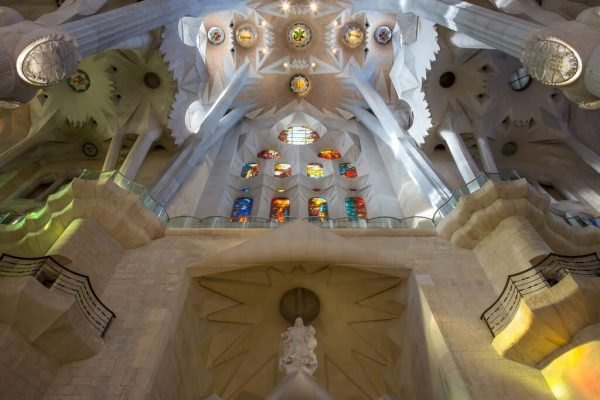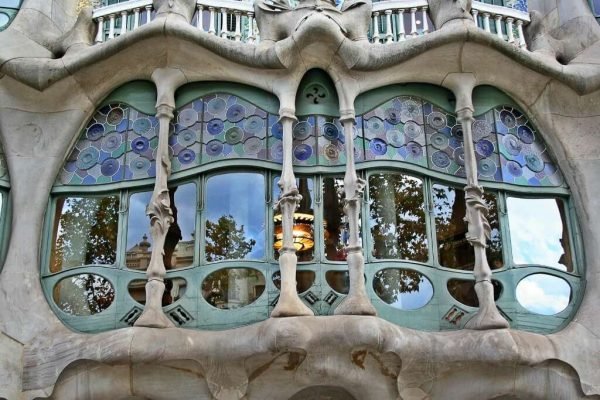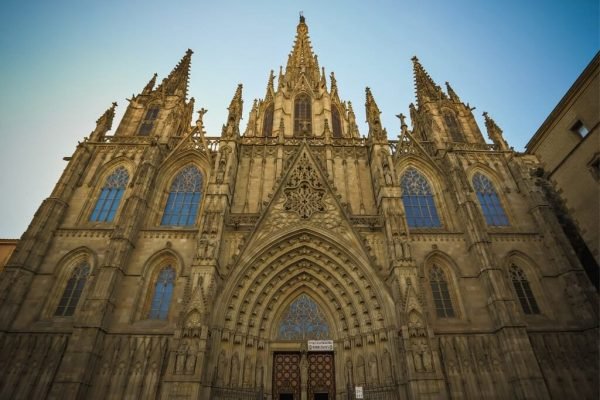Panoramic half-day tour of Barcelona
PEPE TOURS
Panoramic half-day tour of Barcelona
PEPE TOURS
DEPARTURE city
Barcelona, SPAIN
Returning City
Barcelona, SPAIN
Number of HOURS
4 h aprox.
Meeting point
Barcelona
FREQUENCY
Friday, Monday, Saturday, Sunday, Thursday, Tuesday, Wednesday
PRICE in Euros
65,00 €
Sightseeing tour of Barcelona, half-day excursion
We invite you to enjoy a unique experience: discovering artistic Barcelona through the eyes of local guides. Barcelona is a true open-air museum. It’s no coincidence that UNESCO has declared several emblematic buildings by Catalan architects Antoni Gaudí and Lluís Domènech i Montaner as World Heritage Sites. The city’s rich and diverse heritage offers countless routes through its various neighbourhoods, revealing the many faces of Barcelona.
We begin our experience with a fascinating guided walking tour through two of the city’s most historic and character-filled neighbourhoods: El Born and the Gothic Quarter. The route takes us along narrow cobbled streets, hidden squares, and centuries-old buildings that transport us back to the medieval era. We stroll through El Born, a symbol of urban renaissance, where the Basilica of Santa Maria del Mar stands out—a true jewel of Catalan Gothic architecture.
Next, we delve into the Gothic Quarter, the oldest heart of the city, where we discover charming corners such as Plaça del Rei, Plaça Sant Jaume (home to the local government), the iconic Plaça del Pi, and the stunning Barcelona Cathedral, which we admire from the outside. Along the way, we also view the Arc de Triomf, built for the 1888 Universal Exhibition.
After this introduction to historic Barcelona, we board a coach for a panoramic tour of the city’s main modern attractions. We ascend Montjuïc Mountain, a site of great cultural and scenic importance, home to museums, gardens, Olympic facilities, and the imposing Montjuïc Castle. There, we enjoy an exciting cable car ride offering spectacular views of the city and the harbour.
From Montjuïc, we descend by coach to continue exploring Barcelona: crossing the lively Plaça d’Espanya, passing along Gran Via, and travelling down the elegant Passeig de Gràcia – Barcelona’s modernist artery – where we admire two of Antoni Gaudí’s most iconic works: Casa Batlló and La Pedrera.
Departure days:
Friday, Monday, Saturday, Sunday, Thursday, Tuesday, Wednesday
The price of the visit of Barcelona includes
– Travel-insurance
– Transport by modern coach with air conditioning and reclined seats
– English speaking guide during the whole excursion
– Cablecar to Montjuich (upon season)
Price details
| PRICE PER PERSON IN EUROS (SEASON 2025 - 2026) | |
| ADULT | from 65 € |
| CHILD (3 – 11 years) | from 42 € |
Information about Barcelona:
Barcelona, capital of Catalonia, is a cosmopolitan Mediterranean city integrating in its urban outline Roman rests, medieval neighbourhoods and the most beautiful examples of Modernism and the avant-garde of the 20th century. Not in vain the UNESCO has declared World heritage some emblematic buildings of the Catalonian architects Antoni Gaudi and Lluis Domenech i Montaner.
Walking along the sidewalks of Barcelona is being surprised all the time. Pedestrian streets in the Old Neighbourhoods, green areas and a splendid maritime facade with modern installations are the reflection of its integrating character. Barcelona has managed to exalt its past without forgetting its commitment to the future. The variety and patrimonial wealth of Barcelona provides numerous tours through its different neighbourhoods.
The Gothic Neighbourhood is formed by the primitive centre which was surrounded by walls in the Roman period. Narrow streets with secluded squares and endearing corners host an abundant sample of gothic constructions both civil and religious. Around the impressive Cathedral of Barcelona medieval palaces arise, sus as the Casa dels Canonges, la Pia Almoina or Casa d’Ardiaca. The Plaça del Rei offers another maze of marvellous buildings such as the Palau Reial Maior, the Chapel Of Santa Agata or the Museum of City History. Meanwhile the Plaça Sant Jaume gathers important institutions such as the Palau of the Generalitat and the Town Hall or Casa de la Ciutat. Not to be forgotten is the Church of la Merce, patroness of Barcelona.
The also medieval neighbourhood “Barrio de la Ribera” is situated next to the Gothic Neighbourhood. Originally it gathered merchants and fishermen but as time went by beautiful littles palaces were built. Some of them have been renovated to house important museums of the city. The Palace of the Marquesses of Llio (Museum of Textile and Costumes), Palau Nadal (Barbier-Muller Museum of pre-Columbian Art) or the Palau Aguilar (Picasso Museum) are some examples. The integrating character of Barcelona makes it possible to move in only a few metres from the Gothic structures of the Church of Santa Maria del Mar to the Modernism of the Palau of Catalonian Music.
The urbanism of the central area of Barcelona was defined at the end of the 19th century with the Eixample (expansion). An extensive grid with large avenues and chamfered angles joined the irregular outline of the old neighbourhoods and the suburbs with the surrounding hills. Here the emerging Catalonian bourgeoisie erected their mansions and little palaces putting in practice the most daring principles of Modernism.
Architects like Gaudi, Domenech i Montaner and Puig i Cadafalch could count on masters of applies arts in order to fill the streets of Barcelona with fantasy. The Park Guell, Palau Guell and the House Mila “La Pedrera” by Gaudi, as well as the Palau of Catalonian Music and the Hospital of San Pau by Domenech i Montaner were declared World Heritage by the UNESCO. The temple of the Sagrada Familia, the House Lleo Morera, the House Amattler or the House Battlo are some of the numerous jewels of Modernism that house the city.
The Rambla, one of the veins of the Old Town that lead to the Mediterranean Sea, is one of the best places to take the pulse of the city. Its different sections take the visitor from the Romanesque church of Santa Ana to the Bird Market and flower stands, passing along beautiful samples of Renaissance and Baroque architecture. The Palau Moja, the church of Betlem or the Hospital of Santa Creu guide us. Other centres of cultural and daily life are the Palau de la Virreina (nowadays an exhibition centre), the Market La Boqueria or the Great Theater Liceu.
Barcelona is a city that looks towards the sea and its maritime façade is a compendium of different artistic styles. Les Drassanes, the old shipyards and seat of the Maritime Museum, and the Llotja of the sea are some examples of medieval port facilities. Arcaded houses lead to the Park of La Ciutadella, the Olympic Village and the Olympic Port. Beaches, docks, an impressive offer in museums and entertainment (L´Aquàrium, Imax 3D, the viewpoint of Columbus…) convert the harbour of Barcelona in a lively cosmopolitan place full of life.
Some of the modern installations are inherited from the Olympic Games of 1992. A trace which is also perceived at the mountain of Montjuic regarding the monumental works for the Universal Exhibition of 1929. The Castle of Montjuic (Military Museum) dominates this emblematic mountain where jewels of the Barcelona architecture can be found. The Plaza de España, the Fuente Magica, the Palau Nacional (with the medieval background of the National Museum of Art of Catalonia – MNAC) or the Anella Olimpica are some of the most outstanding works. The Estadi Olimpic, the Tower of Calatrava, the Palau d’Esports Sant Jordi and the Pavilion INEFC (National Institute of Physical Education of Catalonia) by Ricardo Bofill are integrated into beautiful gardens.
Please note that
Exceptionally, the itinerary and the order of the excursions could be altered and modified for organizational reasons.














